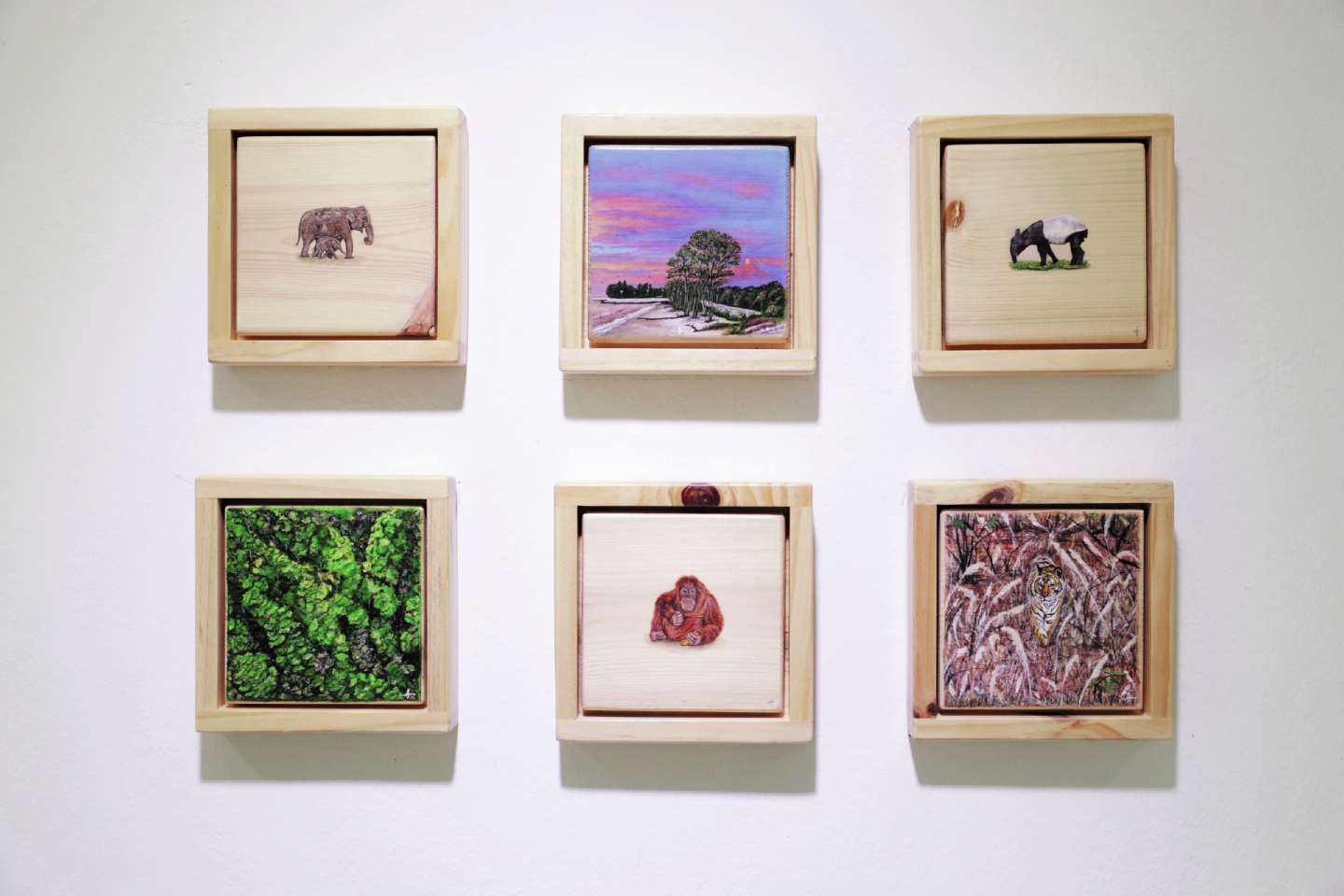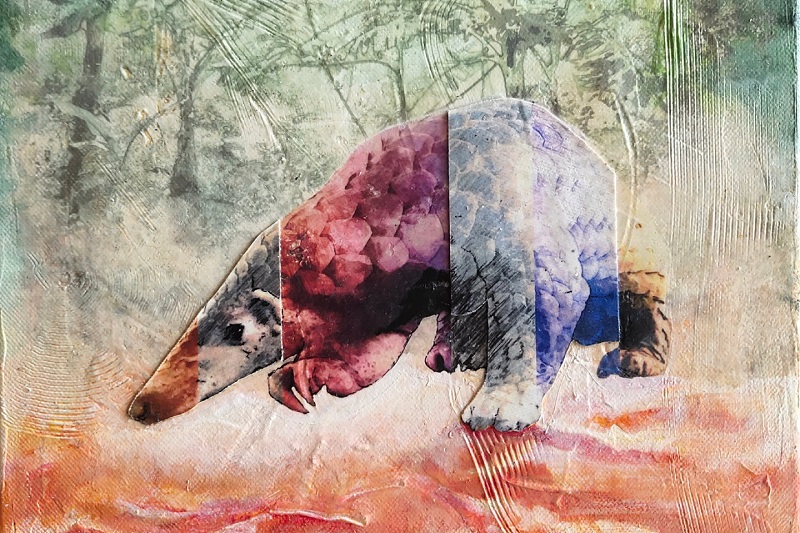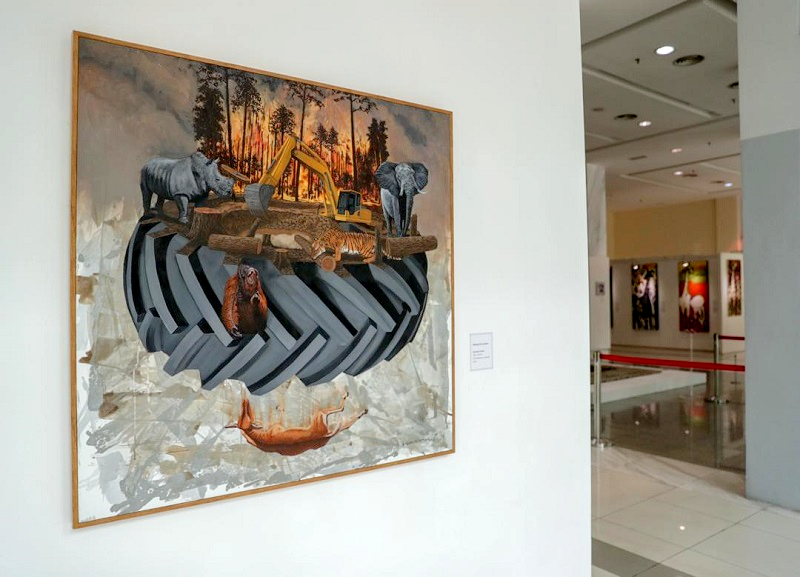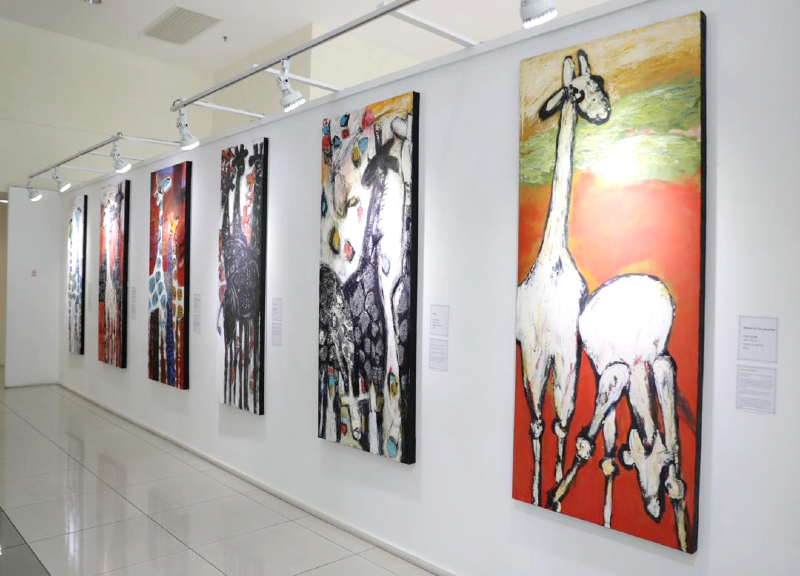
Fariza’s Life is a collection of 18 miniature paintings (All photos: National Art Gallery)
Gallery-goers and art enthusiasts may grieve over the closing of the National Art Gallery (NAG) in Kuala Lumpur as it undergoes a major renovation until October 2021. However, the Creative Space at its lobby is still open and hosting Konservasi.
The group show, organised and curated by Raja Annuar Sifuddin of Pelita Hati in collaboration with NAG, features six local artists with various backgrounds and highlights their diverse points of view in the arts.
As the name suggests, Konservasi deals with themes pertaining to wildlife preservation, the natural world and sustainability. A cursory glance at the artworks on display reveals a myriad of land animals and marine biodiversity, ranging from giraffes, elephants, pangolins and tapirs to sea turtles and dugongs. Sweeping scenes of the sea as well as mountains — treasures of our natural heritage — draw visitors to the artworks.
syazwan_jusoh_seeking_-_pangolin_02_1_1.jpg

In 2018, moved by the plight of animals being increasingly threatened by development, as reported in the media, Raja Annuar met several of the featured artists who happened to be doing works related to creatures of the wild at the time. The idea for Konservasi eventually crystallised towards addressing human greed, evident in the country’s rapid and ever-expanding development — at the cost of ruined wildlife habitats, the degradation of natural ecosystems and the extinction of various animal species.
Fairus Ahmad Yusof has created an art installation for the exhibition while Jing Chung’s Chinese-ink style paintings predominantly feature giraffes. Siti Fariza Basri, a newcomer to the art scene, uses gouache on wood for the first time to produce her miniature paintings while Muhammad Hafiz Azizi focuses on an impasto technique for his oil paintings. Issarezal Ismail makes use of bitumen, acrylic and oil, whereas Syazwan Jusoh crafts pieces made of silkscreen printing and carbon collage.
Quoting the popular adage “a picture is worth a thousand words”, Issarezal says art is a vital tool in contextualising environmental concerns. Konservasi’s aim of using art to raise awareness of environmental issues is pervasive: the pieces on show implore visitors to engage in conversations about conservation, of both wildlife and their natural habitats.
balai_seni_1_1.jpg

In Chung’s Hope, giraffes are seen in the foreground and background, outlined in bold ink brushstrokes. Asked why she chose to paint giraffes for this exhibition, she says they are “very kind and elegant”. But the more important issue here is that they are an endangered species. The repeated motif of this creature illustrates Chung’s concern about wildlife conservation. She believes that neglecting one ecosystem would cause both “ecosystems and people” to suffer.
Issarezal’s artworks are mostly influenced by surrealism. Seeing the unseen, one such piece conveys a very strong message about the destruction of wildlife in the face of modernity and progress. In a nightmare-like landscape, a massive bulldozer wheel dominates the painting while a forest burns in the backdrop. The scene is one of chaos: with logging and deforestation going on, animals synonymous with Malaysia — such as the critically endangered Sumatran rhinoceros, pygmy elephants, orangutan, deer and the Malayan tiger — are seen trying desperately to escape and falling off the bulldozer wheel.
Drawing away from making animals his main subject, Issarezal intentionally paints objects representing human civilisation on a larger scale, symbolic of wildlife habitats that are facing destruction and degradation. Hence, as wildlife struggle to adapt to smaller habitats, humans continue to progress and occupy more space in the world.
konservasi.jpg

Departing from the miniature paintings sized like a 50-sen coin that first got her noticed, Fariza conveys the beauty of nature and life itself with 18 works in slightly larger dimensions. Collectively and aptly titled Life, they mostly depict seascapes and landscapes that highlight the intricacies of her craft.
Fariza’s I See You, an atmospheric piece depicting the moon, is done with gouache on wood. In line with the theme of conservation and sustainability, the wood canvas is sourced and made from reclaimed materials provided by The Green Factory in Kuala Lumpur.
Konservasi sheds light on our conservation efforts as Malaysians. Although Chung believes that such attempts will be more challenging in the future due to human population growth and increasingly limited resources, Fariza is of the opinion that there will be an increase in conservation efforts in the country, albeit with a lot of room for improvement. Pointing out that campaigns should be more aggressive and impactful, she hopes that through art, viewers can “understand, appreciate and love not just nature but ourselves, all humankind and our Creator”.
'Konservasi — An Art Exhibition' may be viewed at Creative Space, National Art Gallery, 2 Jalan Temerloh, Titiwangsa, KL, until Oct 31. Tues-Sun, 10am to 4pm.
This article first appeared on Sept 21, 2020 in The Edge Malaysia.


